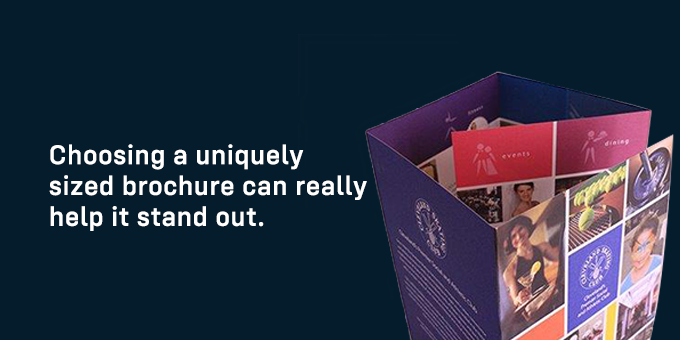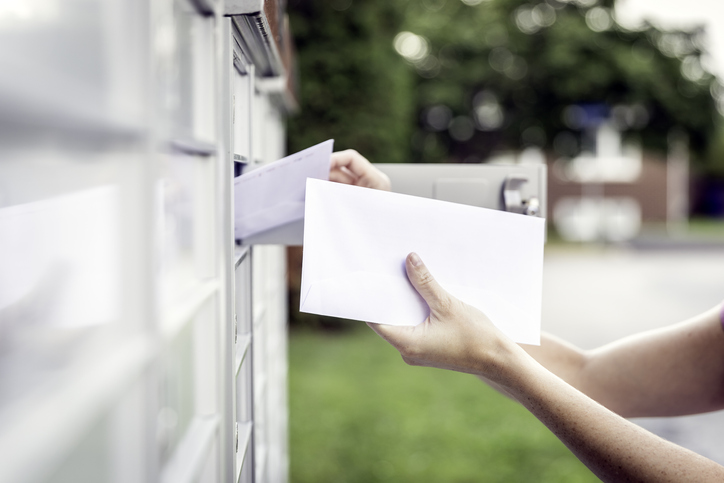
A critical mistake organizations make with their brochure printing is they don’t think about how the brochure will be used until AFTER they design and print it. The following six usage scenarios explain why you must consider brochure usage BEFORE you go to print.
When you’re rushing to create a brochure, it’s all too easy to focus on the copy and the design and forget about the real-world situations in which it’ll be used. And if you’re not designing for usage, it won’t get used. That results in:
- Few or no impressions.
- Expensive reprints.
- Wasted inventory.
- An irritated sales team.
Not the kind of outcomes you want from your brochure, right? So how can you prevent them?
Considering your brochure’s use first not only helps save you money and headache, it can help you create an effective brochure that generates more leads, queries, donations—whatever your goal is.
Different Uses, Different Considerations
Your brochure use should drive important decisions about its size, weight, order quantity, and embellishment features. Here are some examples:
| Brochure Use | Key Considerations |
| Handed out by sales team on the road | Brochures stuffed into suitcases, sitting in briefcases, or traveling around in car trunks take more punishment. |
| Distributed at trade shows | Brochures in a trade show bag can drown in a sea of other collateral. They also can get banged around on their journey back to someone’s desk. |
| Sent through the mail | Brochures that exceed certain sizes and weights will increase your postage. Also, sending without an envelope means adhering to Postal Service design requirements. |
| Blanketing a wide region or audience | Brochures for general use/mass distribution can lead you to fixate on low per-unit costs. But other factors, like the brochure’s shelf life and your actual needs, can be just as important. |
| Distributed more selectively to qualified recipients | Brochures for more targeted groups demand a different mindset when it comes to their quality, features, and order quantity. |
| Hold staff over until a new version is printed | Brochures due to be updated can get delayed and that can hurt your immediate sales efforts. |

Translating the usage to the brochure printing
Now it’s time to factor in how the brochure will be used with these printing recommendations.
1. Brochures used by your sales team on the road: Make ‘em durable
Brochures serve as physical reminders of who you are. That’s why they should be in pristine condition when your salespeople leave them with prospects.
But brochures aren’t made of Kevlar. So when they’re stuffed into suitcases, jostled about in brief cases, or sliding around in car trunks, they can get bent, scratched, or worse.
For brochures used on the road:
- Use a more durable paper stock.
- Opt for a heavy-duty color coating.
- Shrink-wrap in bundles of 25 to protect them and make them easier to count, store, and transport.
Designer Insight:
“I try to ask a lot of questions at the beginning of the project. In relation to how your brochure will be used, it can be helpful to consider what the audience expects. Do you want to conform to that or break free of it?
For example, if you’re a startup at a trade show and you want to look like you have the expertise of a more established company, you may actually want your brochure to appear more standard.
On the other hand, if you’re really trying to shake things up and have people perceive you as different or unconventional, then maybe you want to do a brochure with a really unique size or shape.”

–Tracy Miller, Graphic designer and founder
Dearborn + Elm
2. Brochures used at trade shows: Create ones that stand out (and hold up)
Picture your brochure swimming in a trade show bag full of swag and other collateral. What can you do to help it get noticed?

Choosing a uniquely sized brochure can really help it stand out.
Complex styles like oversized and landscape-folded brochures can now be produced much more cost-effectively—thanks to rapidly advancing digital print technology.
That also means you can order smaller quantities of more targeted brochures without breaking the bank. Let’s say you offer 20 core products to a broad industry like construction:
- Consider whether every trade show audience needs to know about all your products.
- Create a series of audience-specific brochures to deliver a focused message with greater impact.
- Choose a durable paper stock and coating for the punishment the brochure will take on its way to (hopefully) someone’s desk.

3. Brochures for mailing: Consider postage costs and Postal Service requirements
You want to think about how you’re going to distribute your brochures way before they’re printed. This is especially important if you plan to mail them.
To secure optimal postage rates, you need to maintain specific sizes and weights. Don’t underestimate the importance of this: For a high-volume mailing campaign that includes brochures (or annual reports), the postage can really start to add up.
For a brochure in an envelope:
- Be sure it fits appropriately (and isn’t sliding around).
- Make certain everything will fit if you’re also including other items.
- Be aware that stuffing the envelope might just tip the weight into the next postage rate.
For a sealed brochure without an envelope:
- Consider using heavier paper and a durable coating so it holds up during the journey.
- Know what you’re going to do about a postal permit.
- Place the indicia, delivery address, and return address in the correct spots.
Regarding that last bullet, get those things wrong and the Postal Service won’t ship your brochures. You could end up having to reprint them or be forced to place them in envelopes. One way you can prevent issues is by using a printer’s mailing and distribution support.
4. Brochures for general use: Balance lower per unit costs with other relevant factors
If you plan to cover a wide group of brochure recipients, consider the cost of a high-volume order alongside factors like the brochure size, paper quality, color and coating quality, and embellishment features. Strike a balance that creates an effective brochure that’s still affordable.
And even if you’re set on a large amount, calculate the number you realistically can use in the foreseeable future. That seems like such an obvious point, but it’s easy to get caught up in a head-game of cost comparisons.
Sure, you could spend pennies on the dollar for a massive order. But do you really need an amount to last you years and years?
- Consider the likelihood of executives, offices, and product/service lines changing.
- Weigh potential lower per-unit costs with actual usage needs.
- Be certain that a general info brochure is really what you need.

5. Brochures for special recipients: Be more selective with the brochure’s features
If you plan to qualify who gets your brochure, opt for a smaller volume of higher quality brochures intended for a select audience.
Use a less expensive version for wider distribution.
For leads that seem particularly strong, use a limited set of extra-special brochures that take the wow factor to another level in terms of paper stock, size, coating, and high-impact embellishments like texture.
Pro tip: If you’re looking to do more with less (that’s you, non-profits!), you might want to consider all-in-one self-mailer brochures. These can work great at events and for large-scale direct mailings.
6. Brochures to bridge a gap: Print a smaller batch of the current version
Let’s say it’s September and you have salespeople requesting more brochures. Unfortunately, leadership says the next printing has to include your newest product launch. And that’s not until January!
Rather than have your team out there brochure-less or using some rogue collateral they’ve cobbled together themselves, why not print a small amount of your most recent version to hold them over?
Sure, it’s an extra expense, but isn’t it worth it? These are brochures, not the “Mona Lisa.” The beauty of a brochure today is that it’s a flexible and affordable marketing tool that can continually be tweaked.
Digital printing costs less and can be more effective
Digital printing technology has driven down the overall costs of brochures. That means you can be a lot more creative and strategic.
On top of that, as more and more organizations pour money into digital marketing efforts, brochures and other print collateral—materials people hold in their hands—can be a great way to differentiate yourself.
And that’s no small matter, especially when considering what the research on sensory marketing has revealed. Don’t underestimate the power of touch when it comes to your marketing collateral.
And remember, your brochures are about more than just their content. They are physical items with specific uses in the real world. Make sure those uses play a key role in planning your next brochure!
If you’d like assistance with your brochure (or any other printing project), POV Solution gives you more than convenient online ordering. We provide expert design and technical support. Contact us today!

